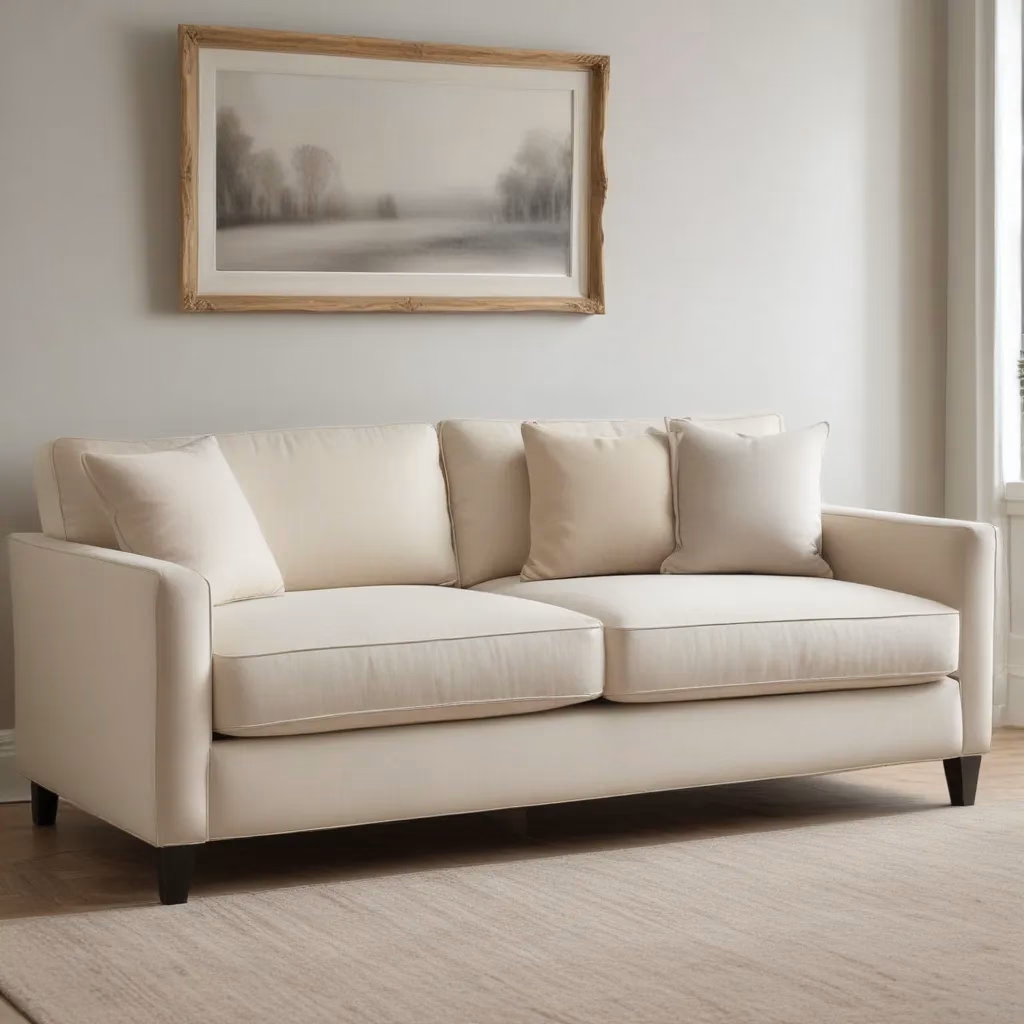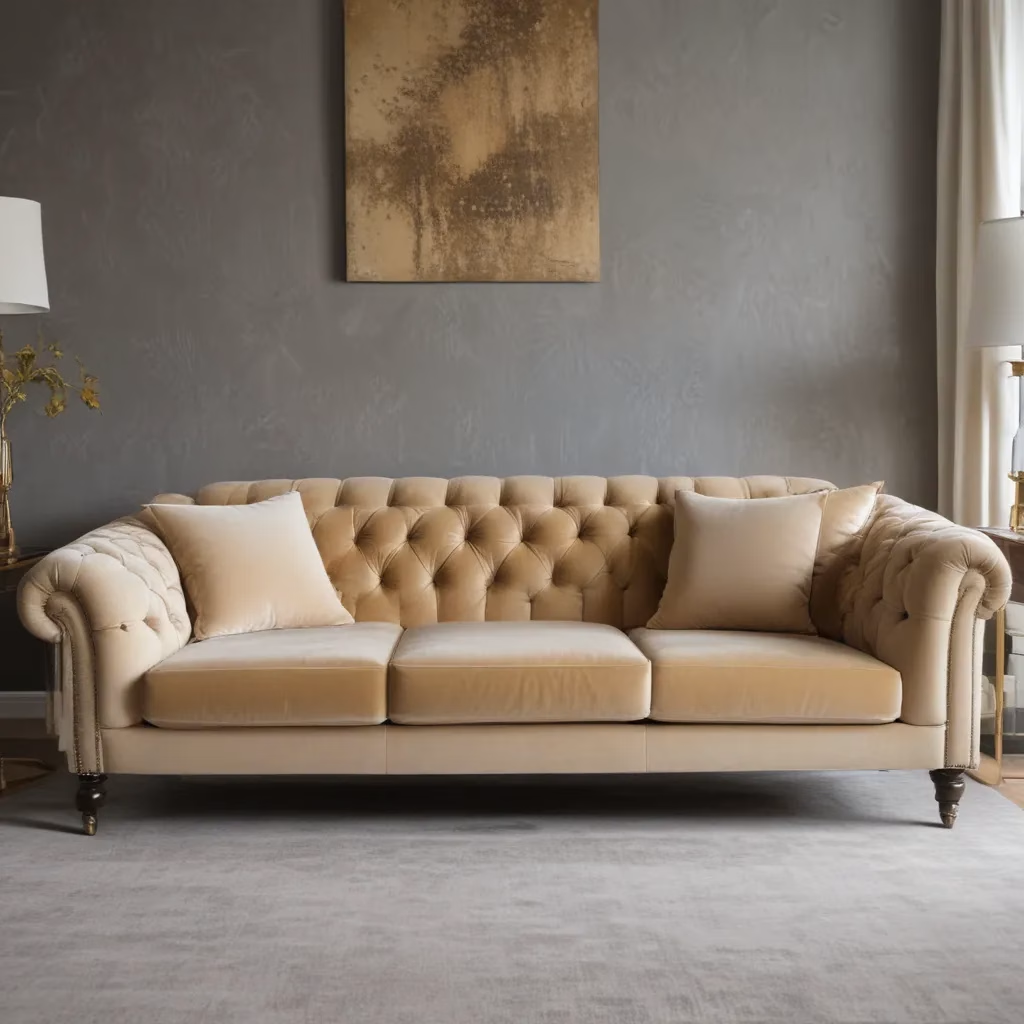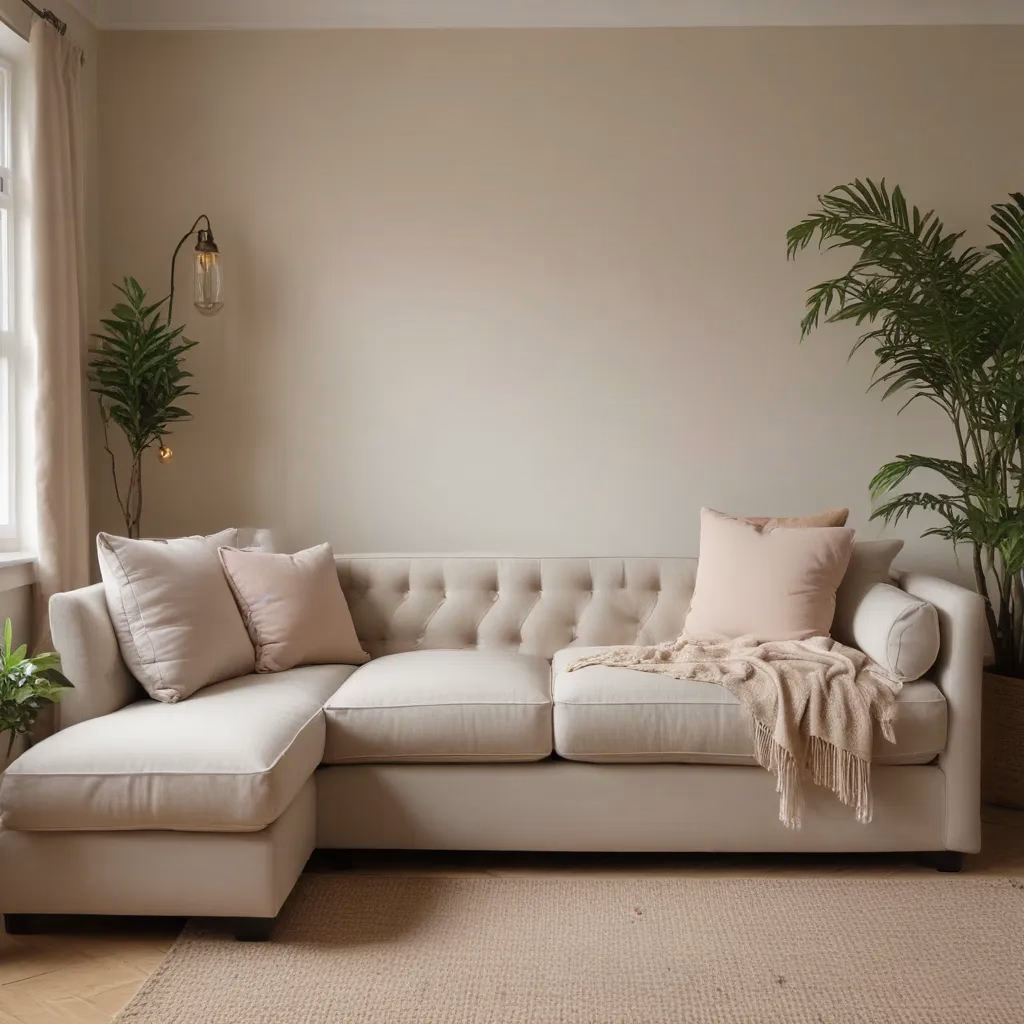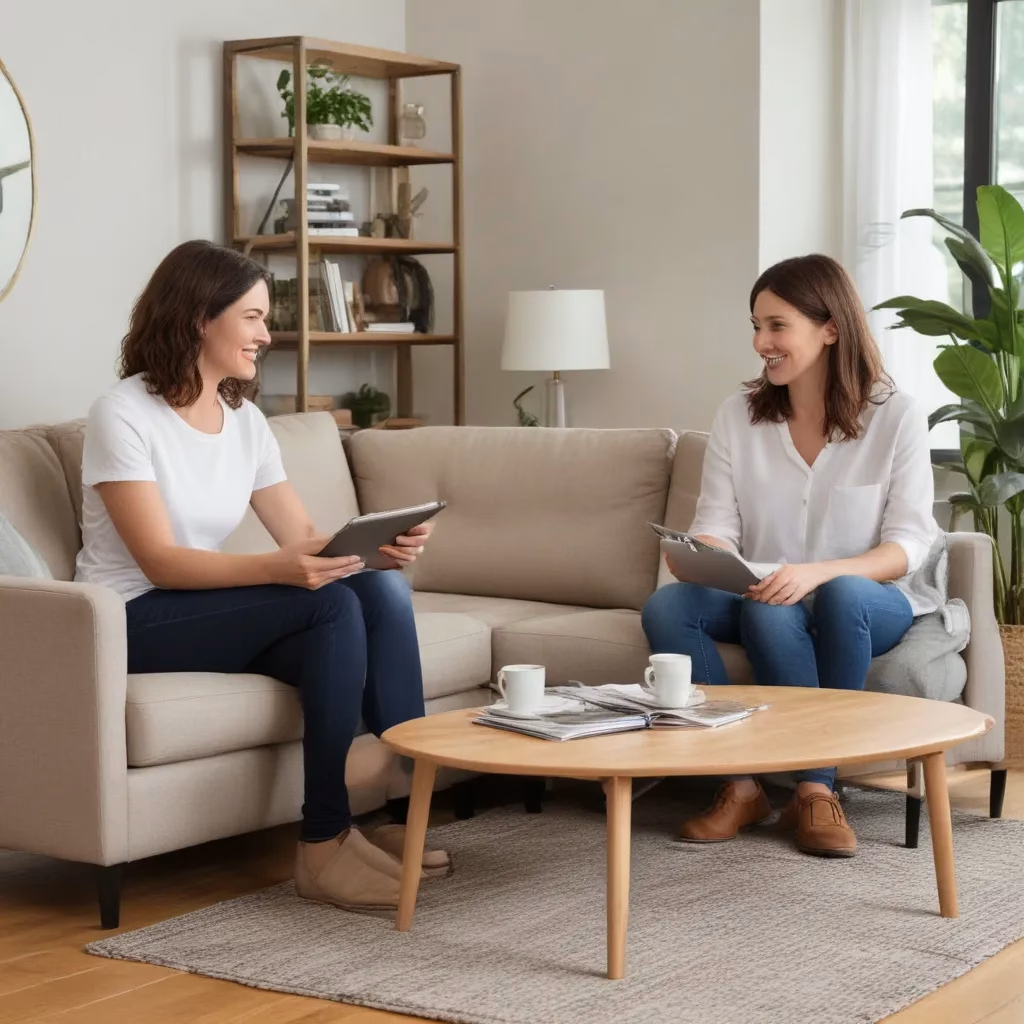
When it comes to purchasing a new sofa for your living room, there are numerous factors to consider beyond just the fabric and style. The underlying frame construction and upholstery materials play a critical role in determining the overall quality, comfort, and longevity of your investment.
As an experienced furniture consultant and interior design writer for SofaSpectacular.co.uk, I’ve seen firsthand how the details of a sofa’s build can make all the difference. In this comprehensive buying guide, I’ll walk you through the essential elements of frame construction, upholstery fabrics, and material selection to help you find the perfect sofa for your home.
Sofa Buying Considerations
Frame Construction and Materials
The foundation of any high-quality sofa is its frame. This is the internal structure that provides support and stability, ensuring your furniture can withstand regular use for years to come. The highest-grade sofas utilize kiln-dried hardwoods like oak, maple, or walnut for their frames.
These dense, knot-free woods are less prone to warping or cracking over time compared to softer woods or engineered wood composites. Look for frames made of 1¼-inch or thicker lumber, as sturdier construction translates to better durability.
Some mid-range furniture manufacturers have also started using high-quality plywood for their frames. While not quite as robust as solid hardwood, well-made plywood can still offer excellent structural integrity, especially when the layers are at least 11-ply thick.
On the other hand, you’ll want to avoid sofas with frames made from particleboard, fiberboard, or other low-grade composite materials. These inexpensive substitutes may seem like a bargain, but they simply won’t stand the test of time under regular use and can compromise the entire piece.
The joints connecting the frame’s various components are another critical factor. The strongest and most long-lasting constructions use glued-and-screwed double dowel joints, often with additional reinforcement from corner blocks. Avoid frames held together primarily with staples, as these connections are much more prone to failure.
Upholstery Fabric Selection
Once you’ve assessed the frame, it’s time to consider the upholstery. The fabric covering your sofa doesn’t just impact its aesthetic — it also plays a major role in how well it holds up to daily use.
There’s a wide spectrum of upholstery options, from delicate natural fibers like cotton and linen to durable synthetic blends and performance fabrics. Generally speaking, the more you’re willing to invest, the higher the quality and longevity of the material.
“Pure aniline” or “full grain” leathers are considered the crème de la crème, prized for their natural markings and buttery soft feel. These premium hides require minimal processing, resulting in a unique, one-of-a-kind appearance that only improves with age.
More affordable “corrected grain” leathers and “semi-aniline” finishes provide a similar look, but with added protectants and pigments to mask any imperfections. These options tend to be easier to clean and maintain, making them a practical choice for high-traffic areas.
For families with young children or pets, performance fabrics engineered for durability and stain resistance can be an excellent investment. Microfiber, for example, offers the soft, supple feel of suede with superior cleanability.
No matter which fabric you choose, make sure to evaluate a sample in person if possible. Factors like color, texture, and hand-feel can vary significantly between online photos and the actual material.
Furniture Sizing and Room Layout
The final piece of the sofa-buying puzzle is ensuring the dimensions work seamlessly within your living space. Measure the area thoroughly, accounting for pathways, doorways, and any other furniture you plan to arrange around the new addition.
When it comes to sizing, bigger isn’t always better. An oversized sofa can overwhelm a room, while a too-small option will leave empty gaps and feel out of proportion. As a general guideline, allow for at least 36 inches of clearance on all sides of your sofa.
For open-concept layouts or spacious living rooms, sectional sofas offer incredible flexibility. These modular designs allow you to customize the configuration to suit your needs, whether you prefer a sprawling U-shape or a more compact L-shape.
Smaller spaces, on the other hand, may be better suited to a loveseat or apartment-sized sofa. Just be mindful of the depth — anything deeper than 40 inches can make the room feel crowded and cramped.
No matter your room’s dimensions, pay close attention to the sofa’s arm height, back height, and overall profile. Pieces with lower, more streamlined silhouettes tend to visually “open up” a space, while taller, more substantial designs can create a cozier ambiance.
Upholstery Care and Maintenance
Once you’ve found the perfect sofa, proper care and maintenance will be key to preserving its appearance and longevity. The specific needs will vary depending on the upholstery material, but there are some universal best practices to keep in mind.
Cleaning and Stain Removal
For fabrics like cotton, linen, or microfiber, regular vacuuming with the upholstery attachment and spot-cleaning with a mild, water-based cleaner can help keep things looking fresh. Avoid harsh chemical solutions, as these may discolor or break down the fibers over time.
Leather sofas require a bit more diligence. Use a specialized leather conditioner every few months to nourish the hide and prevent cracking or fading. Blot up spills immediately with a clean, dry cloth, and consult the manufacturer’s instructions for deeper cleaning.
If you have any doubts about a particular stain or soiling issue, it’s best to have the piece professionally cleaned. Attempting DIY remedies without knowing the fabric type could do more harm than good.
Fabric Protection Techniques
To extend the lifespan of your sofa’s upholstery, consider applying a fabric protector treatment. These invisible, water-based sealants create a barrier that repels liquids and makes it easier to wipe away spills before they can set in.
For delicate natural fabrics, a professional-grade Scotchgard or similar product can be a game-changer. You can also find sprays designed specifically for microfiber and other performance textiles.
Just be sure to follow the application instructions carefully and avoid over-saturating the material. Regular maintenance, like vacuuming and light brushing, is still essential to keep your sofa looking its best.
Long-Term Preservation
Over time, even the highest-quality upholstery will begin to show some wear. Fluffing cushions, rotating seat positions, and keeping the sofa out of direct sunlight can help delay the inevitable.
When the time comes to refresh your living room, consider investing in replacement cushions or having the piece professionally reupholstered. This can breathe new life into a beloved sofa without the need to start from scratch.
Living Room Décor and Styling
Once you’ve selected the perfect sofa for your space, it’s time to think about how to style the rest of your living room. The right complementary furnishings and accessories can truly elevate the overall look and feel.
Sofa Placement and Orientation
Start by considering the optimal placement and orientation of your new sofa. Facing it towards the room’s focal point, such as a fireplace or entertainment center, creates a natural gathering space. Positioning it at an angle can also help define different seating areas within an open floor plan.
If you have the flexibility, experiment with different layouts. An L-shaped sectional might work better than a traditional three-seater in a longer, narrower room. Alternatively, a loveseat paired with a pair of armchairs can make for a more intimate, conversation-friendly arrangement.
Complementary Furnishings
The sofa should serve as the foundation for your living room design, but it needn’t be the sole star of the show. Incorporate complementary pieces that enhance the overall aesthetic, like:
- Accent chairs: Armchairs, club chairs, or wingbacks in contrasting fabrics or finishes can add visual interest.
- Coffee and end tables: Sleek, modern tables or vintage-inspired ottomans can anchor the seating area.
- Area rugs: Layered rugs in varied patterns and textures can define separate zones.
- Decorative pillows: Throw pillows in coordinating colors and prints lend a polished, finished look.
Lighting and Accessorizing
Proper lighting is crucial for creating a warm, inviting living room ambiance. Position floor lamps behind the sofa or install sconces on the walls to provide both ambient and task lighting. Dimmers allow you to adjust the brightness to suit the mood.
Finally, accessorize with personal touches that reflect your unique style. Artwork, greenery, and decorative objects can all help tie the space together while leaving room for your own creative flair.
Furniture Buying Guides
With so many options on the market, the sofa-shopping process can feel daunting. However, by keeping a few key principles in mind, you can navigate the landscape and find the perfect piece for your home.
Evaluating Quality and Durability
When assessing potential sofas, look beyond just the surface-level aesthetics. Dig into the construction details, like the frame materials, joint reinforcements, and suspension system. The higher the quality of these underlying elements, the more reliable and long-lasting your new sofa will be.
Don’t be afraid to ask plenty of questions, both online and in-person. Reputable furniture retailers should be transparent about the manufacturing processes and materials used in their products.
Budgeting and Cost Considerations
As you might expect, higher-quality sofas tend to come with a higher price tag. The best way to approach your budget is to first determine your “might want to-haves” in terms of comfort, style, and longevity. Then, look for the best value within that criteria.
Keep in mind that while an investment in a well-built sofa may cost more upfront, it can pay dividends in the long run. Cheaper, lower-quality options may seem like a bargain, but they’re more likely to require replacement sooner.
Comparison of Purchasing Options
When it comes time to make your purchase, you have several avenues to explore. Shopping in-person at a furniture showroom allows you to thoroughly inspect and test out potential sofas, but online retailers like SofaSpectacular.co.uk often offer a wider selection and more competitive pricing.
Whichever route you choose, make sure to thoroughly research the brand, read reviews, and understand the return policy and warranty coverage. Buying quality furniture is an investment, so you’ll want to double-check that you’re working with a trusted, reputable provider.
By keeping these sofa-shopping best practices in mind, you can confidently navigate the process and find the perfect addition to your living room. With the right blend of style, comfort, and durability, your new sofa will become the centerpiece of your home for years to come.
Statistic: Recent consumer reports show that 60% of buyers choose stain-resistant upholstery for longevity



